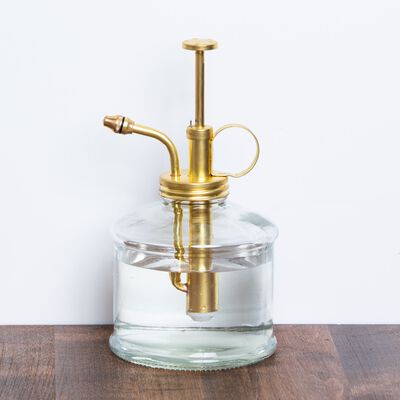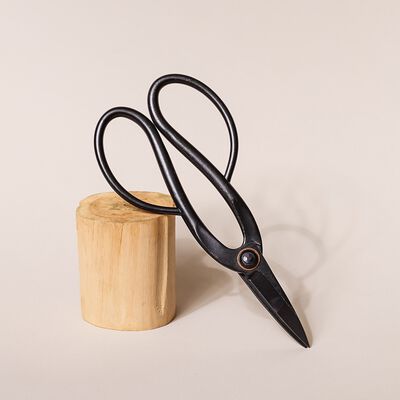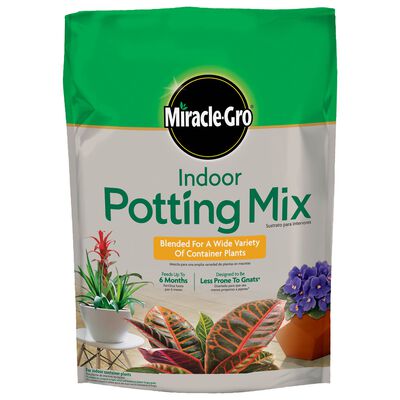
Your Guide To: Alocasia
Everything you need to know to care for this moisture-loving plant.
With a nickname like African mask, you can tell that alocasia has a distinctive look before you even set eyes on its large, arrowhead-shaped leaves. Known for its large, colorful, textural foliage, alocasia stands out among your other houseplants and, like a great piece of art, creates a focal point in any space. Check out the interesting foliage on varieties including polly, zebrina, black velvet, and dragon scale.
While it's not high-maintenance, alocasia does not like to be ignored. With the right care, it's one of the fastest-growing houseplants.
How to Keep an Alocasia Happy
Native to the forests of Asia and eastern Australia, your alocasia will do best in a warm, humid environment.
How Much Lighting Does an Alocasia Need?
Alocasia plants crave bright, indirect sunlight like they’re used to enjoying on the forest floor under the tree canopy.
Avoid direct light from sunny windows, which can burn and damage leaves.
If your alocasia doesn’t seem to be getting enough light, you can add a fluorescent lamp or even a grow light to its environment to help.

How Do I Know When To Water My Alocasia?
Alocasia likes consistently moist soil. Be sure to keep it from getting soggy. During spring and summer, this may mean watering once or possibly even twice a week. Waterless often in the winter.
Don't let your alocasia dry out completely. Stick your finger in the soil to test. If the top one inch of soil is dry to the touch, it's time to water. If you'd rather take the guesswork (and your finger) out of it, use a plant moisture indicator from our shop.
To water, use a small container or watering can to pour water out slowly, directly onto the soil, moving in a clockwise motion to evenly water the plant's roots. Alocasia plants do best in pots with trays or saucers so you can dump extra water and avoid root rot.
How Do I Use Plant Food for My Alocasia?
Plant food is an important part of fostering healthy growth and new leaves as your plant settles into its new digs. Be sure to follow the directions on the package based on the size of your plant and time of year. In fall and winter your plant will grow more slowly, so you don't need to feed it as often. Yes, even though your plant lives inside, it still experiences the seasons.
What Is an Alocasia’s Ideal Environment?
Alocasia plants really like humidity, but they will do fine in most home environments. Misting your alocasia leaves a few times a week is beneficial. Running a humidifier in the same room is another way to make this tropical plant happy.
For the best growth, keep it in a room that is warm all year, with a temperature between 60 and 85 degrees. Do keep it away from heating and cooling vents and far enough from windows that its leaves won’t touch cold glass.

How Do I Prune and Maintain My Alocasia?
Your Greendigs alocasia does not need much pruning. You may want to trim old or spotted leaves with a pair of pruning shears. Also, pruning will encourage new growth. Just be sure that any heavy pruning is done early in the growing season, giving your plant enough time to recover before winter.
Each time you water your alocasia, rotate the container a quarter turn. This way you'll make sure it gets the same amount of light on all sides. Our plant trivet set makes this easy and stylish, too.
How to Address Common Alocasia Issues
- Droopy leaves may mean it's not getting enough water, isn't getting enough nutrients from the soil or could be a sign of pests.
- Spots on the leaves may mean your alocasia is sensitive to the salts, minerals, or chlorine in its water. Either switch to distilled water or leave tap water in an open container for 24 hours so the particles will evaporate.
- Too much water may cause fungal infections.
What to Do If You Still Have Questions?
If your alocasia doesn't seem to feel at home in your space, we're here to help. Chat live with a Greendigs representative on our website or shoot us an email at [email protected].


